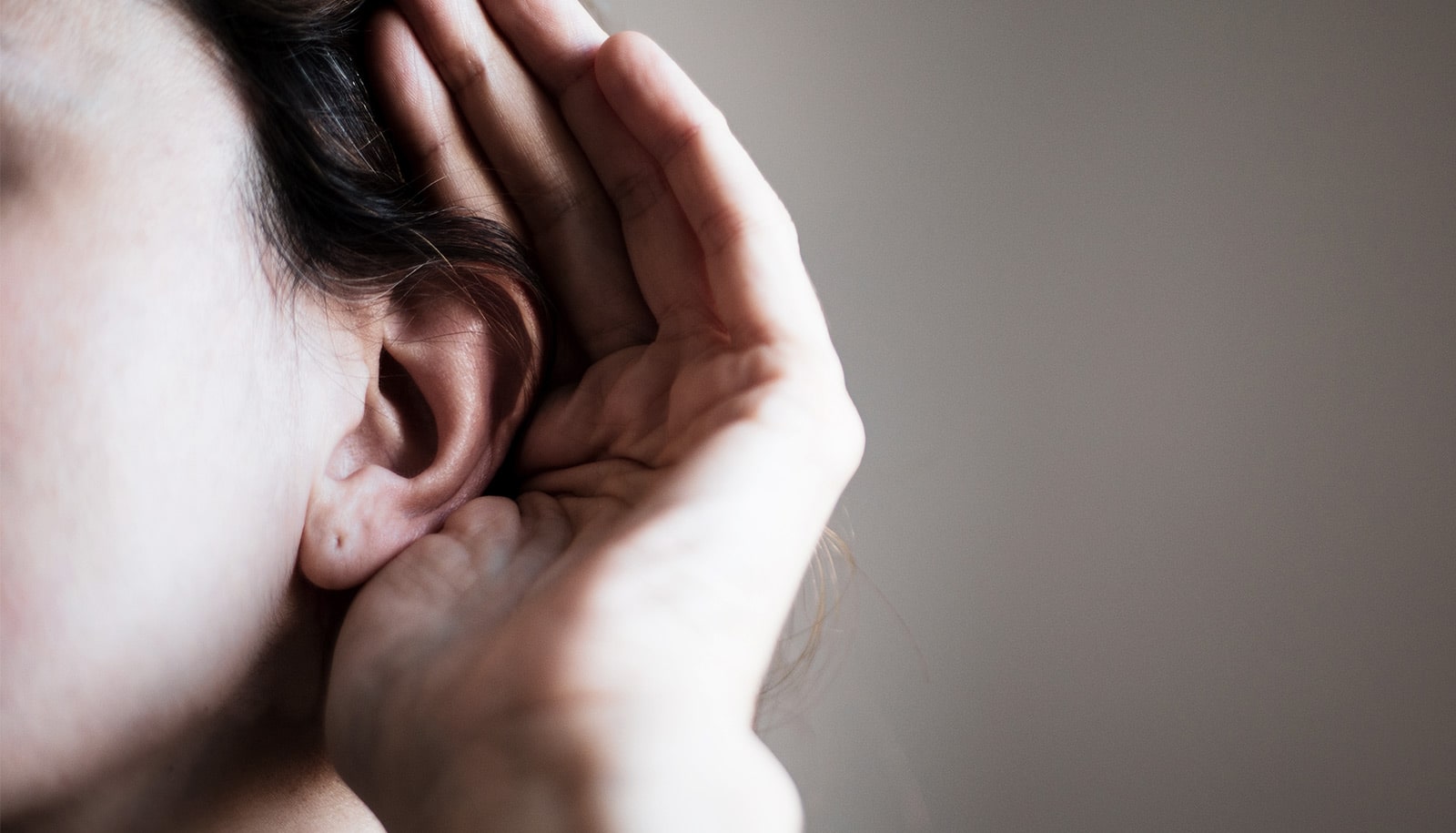
(Credit: Getty Images )
Can drug delivery to the inner ear restore hearing?
Delivering drugs into the inner ear may "represent an important step towards using gene therapy to restore hearing in humans."
Researchers have developed a new method to deliver drugs into the inner ear.
The discovery was possible by harnessing the natural flow of fluids in the brain and employing a little understood backdoor into the cochlea. When combined to deliver a gene therapy that repairs inner ear hair cells , the researchers were able to restore hearing in deaf mice.
“These findings demonstrate that cerebrospinal fluid transport comprises an accessible route for gene delivery to the adult inner ear and may represent an important step towards using gene therapy to restore hearing in humans,” says Maiken Nedergaard, senior author of the new study, which appears in the journal Science Translational Medicine .
Nedergaard is co-director of the Center for Translational Neuromedicine at University of Rochester and the University of Copenhagen. The study was the product of a collaboration between researchers at the two universities and a group led by Barbara Canlon, PhD in the Laboratory of Experimental Audiology at the Karolinska Institute in Stockholm, Sweden.
The number of people worldwide predicted to have mild to complete hearing loss is expected to grow to around 2.5 billion by mid-century. The primarily cause is the death or loss of function of hair cells found in the cochlea—which are responsible for relaying sounds to the brain—due to mutations of critical genes, aging, noise exposure, and other factors.
While hair cells do not naturally regenerated in humans and other mammals, gene therapies have shown promise and in separate studies have successfully repaired the function of hair cells in neonatal and very young mice. However, as both mice and humans age, the cochlea , already a delicate structure, becomes enclosed in temporal bone. At this point, any effort to reach the cochlea and deliver a gene therapy via surgery risks damaging this sensitive area and altering hearing.
In the new study, the researchers describe a little understood passage into the cochlea called the cochlear aqueduct. While the name conjures images of monumental stone architecture, the cochlear aqueduct is thin boney channel no larger than a single strand of hair. Suspected to play a role in balancing pressure in the ear, the new study shows that that the cochlear aqueduct also acts as a conduit between the cerebrospinal fluid found in the inner ear and the rest of the brain.
Scientists are developing clearer picture of the mechanics of glymphatic system, the brain’s unique process of removing waste first described by the Nedergaard lab in 2012. Because the glymphatic system pumps cerebrospinal fluid deep into brain tissue to wash away toxic proteins, researchers have been eyeing it as a potentially new way to deliver drugs into the brain , a major challenge in developing drugs for neurological disorders.
Researchers have also discovered that the complex movement of fluids driven by the glymphatic system extend to the eyes and the peripheral nervous system, including the ear. The new study represents an opportunity to put the drug delivery potential of the glymphatic system to the test, while at the same time targeting a previously unreachable part of the auditory system.
Employing a number of imaging and modeling technologies, the researchers were able to develop a detailed portrait of how fluid from other parts of the brain flows through cochlear aqueduct and into the inner ear. The team then injected an adeno-associated virus into the cisterna magna, a large reservoir of cerebrospinal fluid found at the base of the skull. The virus found its way into the inner ear via the cochlear aqueduct and delivered a gene therapy that expresses a protein called vesicular glutamate transporter-3, which enable the hair cells to transmit signal and rescued hearing in adult deaf mice.
“This new delivery route into the ear may not only serve the advancement of auditory research, but also prove useful when translated to humans with progressive genetic-mediated hearing loss,” says Nedergaard.
Additional coauthors are from the University of Copenhagen, the Karolinska Institute, and Harvard University.
Funding for the research came from the Lundbeck Foundation, the Novo Nordisk Foundation, the National Institute of Neurological Disorders and Stroke, the Knut and Alice Wallenberg Foundation, the Karolinska Institute, the Tysta Skolan Foundation, Hörselforskningsfonden, the European Union’s Horizon 2020 Research and Innovation Programme, the Danish Society for Neuroscience, the US Army Research Office, the Human Frontier Science Program, the Dr. Miriam and Sheldon G. Adelson Medical Research Foundation, Simons Foundation, the Jeff and Kimberly Barber Fund, and Foundation Pour L’Audition.
Source: University of Rochester
The post Can drug delivery to the inner ear restore hearing? appeared first on Futurity .
Share this article:
This article uses material from the Futurity article, and is licenced under a CC BY-SA 4.0 International License. Images, videos and audio are available under their respective licenses.
Related Articles:
The way bacteria ‘go fishing’ could improve antibiotics
Dec. 10, 2018 • futurityDrug crosses blood-brain barrier to fight glioblastoma in mice
Nov. 17, 2022 • futurityLinks/images:
- https://www.futurity.org/hearing-loss-cochlear-regeneration-1888982/
- https://doi.org/10.1126/scitranslmed.abq3916
- https://www.futurity.org/cochlear-implants-sound-pitch-1617222-2/
- https://www.futurity.org/sleep-brain-cleaning-1994692/
- https://www.futurity.org/brain-drug-delivery-alzheimers-disease-1893552/
- https://www.urmc.rochester.edu/news/story/an-unexpected-doorway-into-the-ear-opens-new-possibilities-for-hearing-restoration
- https://www.futurity.org/drug-delivery-inner-ear-hearing-loss-2938132/
- https://www.futurity.org


